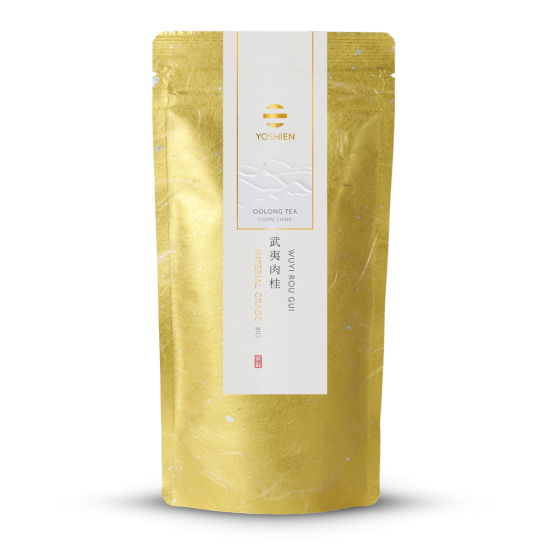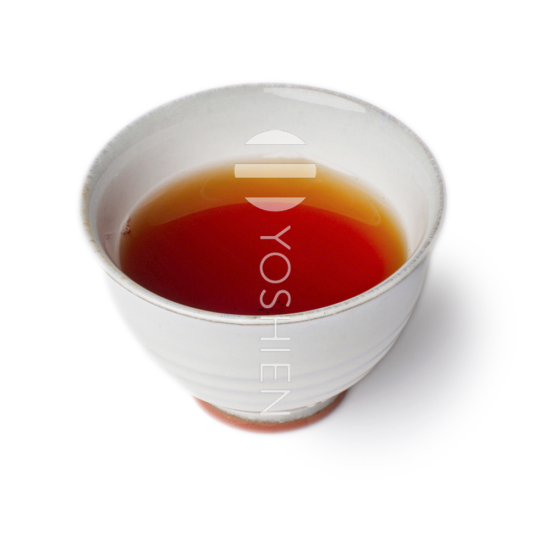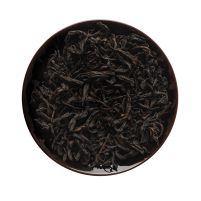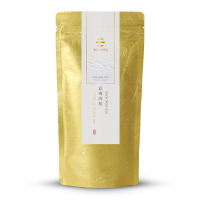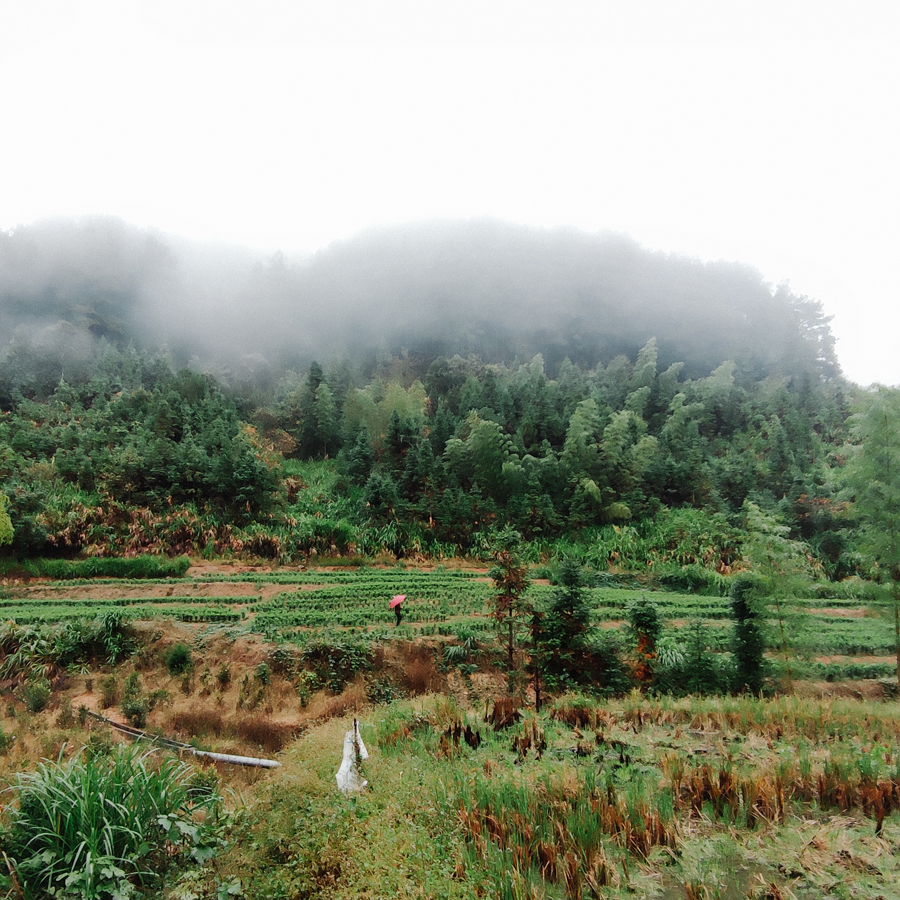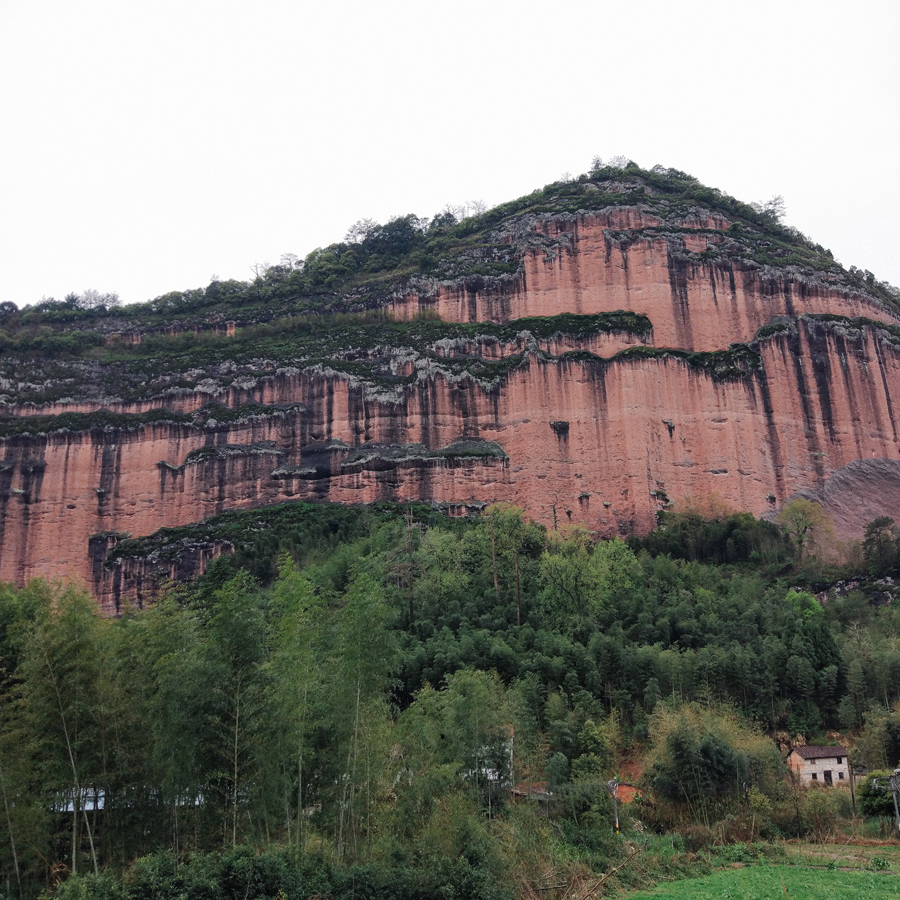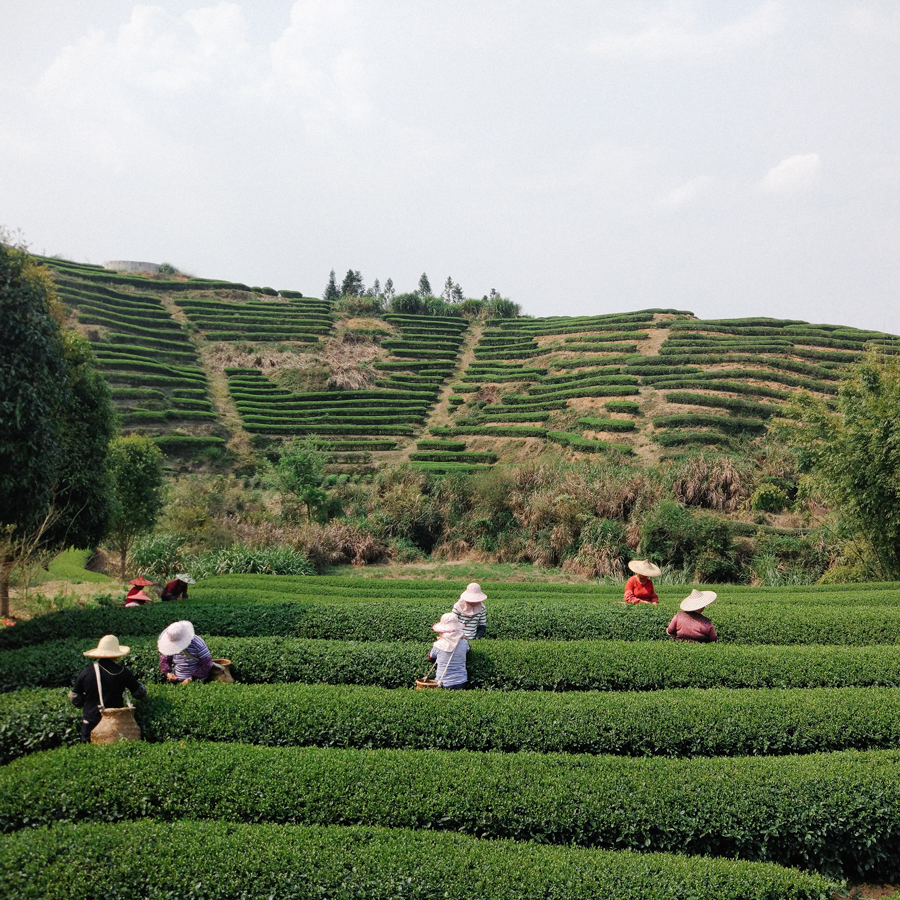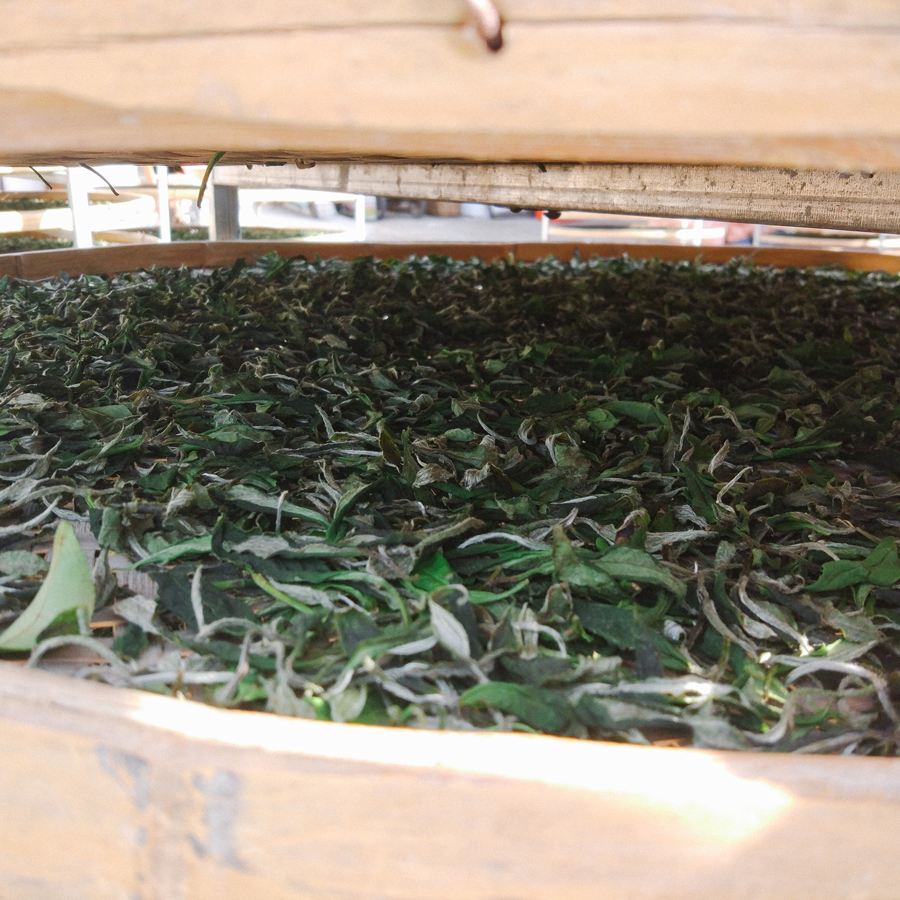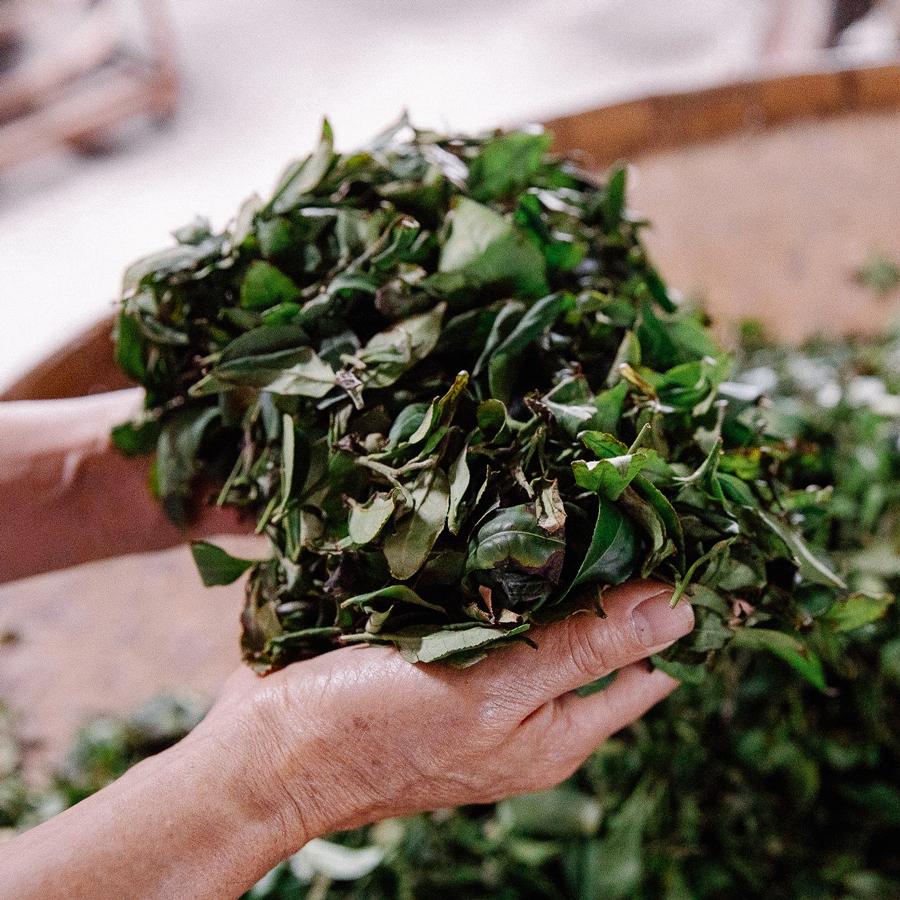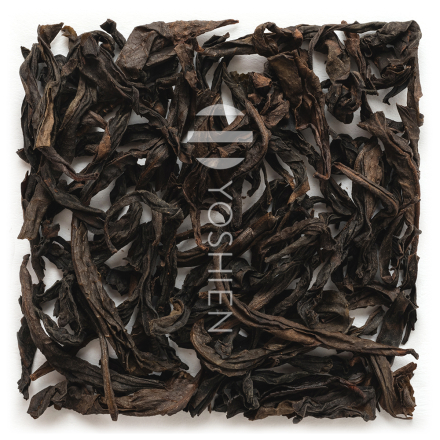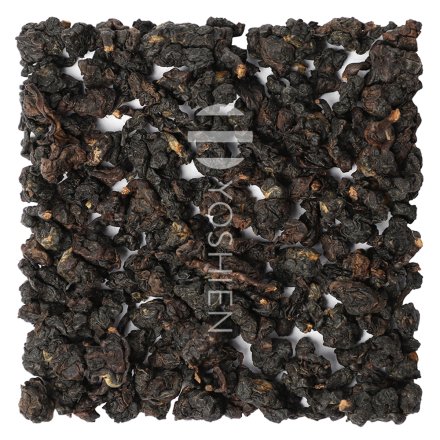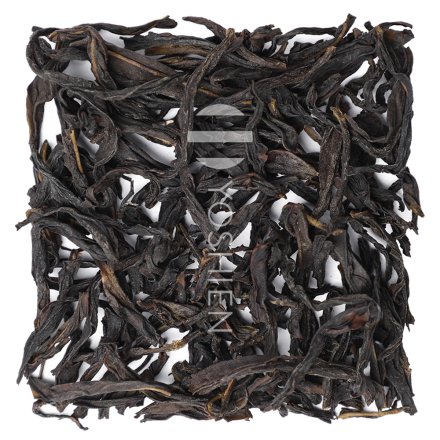Special features in location, cultivation and processing
Rou Gui (肉桂) is one of the most renowned Wuyi rock tea cultivars and owes its name ("cinnamon bark") to the fine, cinnamon-like fragrance of the tea. Subtle woody and fruity undertones accompany this flavour, with top-grade Rou Gui teas offering a profoundly complex aromatic spectrum. Thanks to its cinnamonic aroma combined with a deep minerality reminiscent of damp autumn leaves, this cultivar boasts a particularly rich range of aromatic notes and is particularly popular as a gourmet variety.
The harvest for our tea is done by hand, traditionally using the bud and the first three leaves. After picking, the leaves are withered in the sun to draw out moisture, during which light oxidation or fermentation already begins. The leaves are then taken out of the sun and further withered, during which they are repeatedly tossed and turned. Tiny tears appear in the leaves, especially along the edges, allowing cell sap to escape and oxidise upon contact with the oxygen in the air. This process can take up to two days. In the next stage, fermentation intensifies. Depending on the volume, the leaves are laid out to rest on bamboo trays in the fermentation chamber, where they develop a reddish-brown colour at the torn edges.
Once the desired degree of fermentation is reached, the process is halted by applying heat in an oven (a step known as "kill green"). The leaves are then rolled, which breaks them slightly and allows the cell sap to spread across the leaves and harden. During rolling, the tea also acquires its characteristic twisted, needle-like shape. In the next step, it is gently roasted several times over hardwood charcoal. Each roasting session lasts between eight and twelve hours, and several days may pass between them. Finally, after cooling, the leaves are carefully sorted.
Single Origin
This tea comes 100% from the above-mentioned tea field in Wuyi, sourced directly from the tea farmer.
Organic Certification







